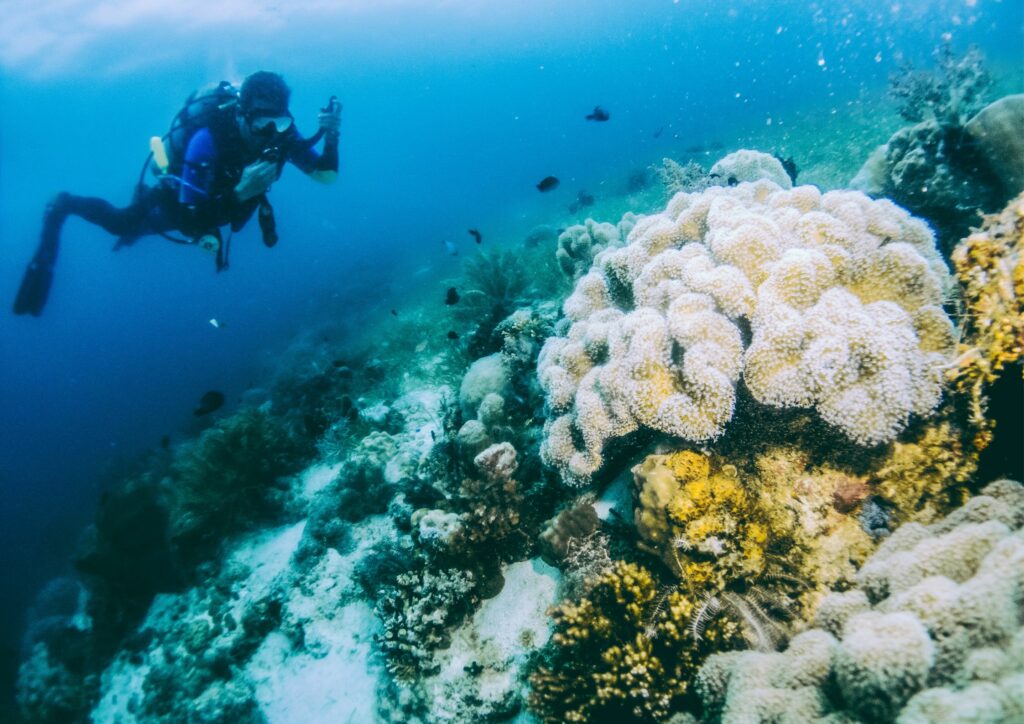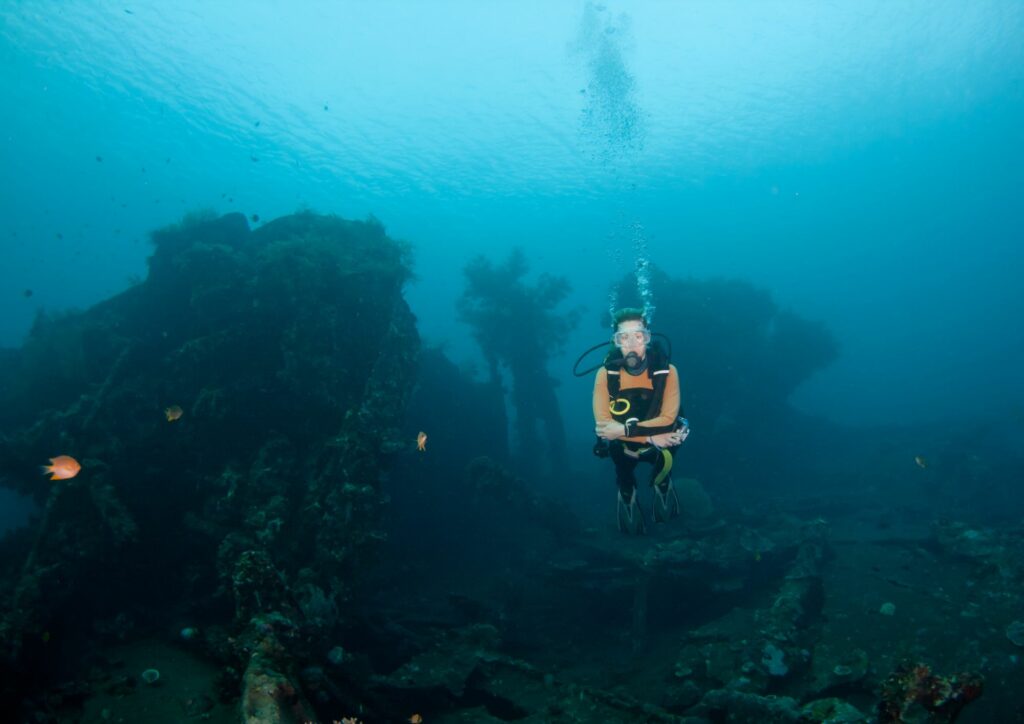Bali is not only renowned for its lush landscapes and vibrant culture but also for its incredible diving spots where drift diving takes the spotlight. Whether you’re a seasoned diver or new to the underwater world, understanding how to navigate currents is crucial for an enjoyable experience. Drift diving in Bali can lead to breathtaking vistas and unique marine life, but it also comes with its own set of challenges. In this blog, we will delve into essential safety tips to ensure that your drift diving adventure in Bali is both safe and unforgettable. From recognizing the strength of currents to mastering your buoyancy, these insights will help make your scuba diving escapades truly remarkable.
Understanding Drift Diving: What You Need to Know
Drift diving in Bali is an exhilarating experience for scuba divers, but it also requires a solid understanding of underwater currents. These natural phenomena can vary significantly, influencing your dive significantly. Familiarizing yourself with local conditions is crucial; strong currents can transport divers far from their intended locations. Always check current forecasts and consult local dive shops or instructors to gauge the best times for diving. Additionally, divers should master buoyancy control and communication signals to thrive in faster water. Remember, safety is paramount—diving with a buddy and adhering to safety protocols enhances your overall experience.
The Role of Currents in Bali: A Diver’s Guide
In Bali, understanding currents is crucial for a successful drift diving experience. These oceanic flows can vary in strength and direction, influencing your dive’s safety and enjoyment. Being aware of factors such as tides, wind patterns, and seasonal changes can significantly enhance your dive planning. For instance, the currents around popular dive sites like Nusa Penida are often stronger, requiring divers to adapt their techniques accordingly. Learning to read the water and recognizing potential hazards can empower divers to better navigate their surroundings. Consequently, thorough preparation and knowledge of local conditions are vital for a memorable Bali diving adventure.
Essential Equipment for Safe Drift Diving
To ensure a safe and enjoyable drift diving experience in Bali, selecting the right equipment is crucial. First and foremost, a reliable dive computer is essential for monitoring your depth and time underwater, especially in varying currents. A buoyancy control device (BCD) that fits well will help you maintain stability and control while drifting. Don’t forget a high-quality wetsuit that offers protection against cold water and marine life. Additionally, a surface marker buoy (SMB) is invaluable for signaling to your boat when you’re ready to surface, ensuring you are always visible. Lastly, consider a dive knife for safety, allowing you to easily cut away any entanglements in case of emergencies.
Tips for Reading Ocean Currents While Diving
When diving in Bali, understanding ocean currents is crucial for a safe and enjoyable experience. Firstly, always check local current reports and tide charts before diving. These resources provide valuable information about expected currents, helping you to plan your dive accordingly. Secondly, observe the water’s surface for signs of current direction, such as floating debris or ripples.
This will give you a preliminary idea of what to expect below. Additionally, seek advice from local dive operators about the current conditions specific to your dive site; their expertise can be invaluable. Lastly, familiarize yourself with the ‘one degree of separation’ rule, which states that the deeper you go, the less you will be affected by surface currents. This knowledge is essential to ensure a safe and fun drift diving experience in Bali.
Pre-Dive Planning: Assessing Conditions Before You Dive
Before embarking on a drift diving adventure in Bali, pre-dive planning is crucial for safety. Start by assessing the water conditions, including current strength and direction, which can vary significantly depending on the time of year and location. Utilize local dive reports, chat with experienced divers, and consult dive shops for up-to-date information. Understanding the dive site’s topography and entry points can also enhance your awareness of potential hazards. Be sure to have a reliable weather forecast for wind and tides, as these factors can influence currents dramatically. Lastly, always communicate with your dive buddy about your plan and ensure everyone is on the same page regarding safety protocols.

Staying Safe During the Dive: Best Practices
When it comes to drift diving in Bali, safety should always be your top priority. First, always check the local current conditions and plan your dive accordingly. Choose a reputable dive operator who is familiar with the area, as they can provide valuable information about potential hazards. It’s essential to maintain proper buoyancy and avoid surfaces that can create additional drag; this will help you navigate the currents more effectively. Remember to stay close to your dive buddy and maintain clear communication underwater. Lastly, carry a surface marker buoy to signal your location; this is crucial for safety during drift dives.
Post-Dive Considerations: What to Do After You Surface
After completing your drift dive in Bali, it’s essential to properly manage post-dive considerations to ensure your safety and well-being. First, allow your body to acclimate to the surface conditions by taking a few moments to breathe deeply and relax. Hydrate yourself by drinking water, as diving can lead to dehydration. Additionally, monitor yourself for any signs of decompression sickness, such as fatigue or unusual joint pain. If you’re diving with friends or a group, take some time to share your experiences and discuss the dive, which not only builds camaraderie but also enhances learning. Lastly, remember to log your dive details, as keeping accurate records helps in tracking your dive experiences and planning future dives.
Bali’s Best Drift Diving Spots and Their Specific Currents
Bali is renowned for its exceptional drift diving spots, each offering unique currents that appeal to divers of all levels. The most popular sites include the vibrant blue waters of Nusa Penida, where the currents can be strong, making it ideal for experienced divers. Other notable locations are Amed and Tulamben, known for their gentle currents, providing a relaxing experience for beginners. The currents in these areas can change rapidly due to tidal fluctuations and marine activity, so it’s essential to be aware of the conditions before you dive. To ensure a safe dive, always check local reports or consult with dive instructors who know the area well.
Embrace the Thrill of Drift Diving in Bali Safely
Drift diving in Bali offers an unparalleled adventure, allowing divers to explore vibrant marine life while being gently carried by the currents. By following the essential safety tips outlined in this blog, you can enhance both safety and enjoyment during your underwater journeys. Remember to always check local current conditions, communicate effectively with your dive buddies, and maintain your buoyancy skills. These precautions will allow you to fully immerse yourself in the breathtaking underwater landscapes that Bali diving has to offer, all while prioritizing your safety.
As you prepare for your next scuba diving adventure, keep these safety tips in mind to ensure a memorable experience. Whether you’re a seasoned diver or a novice, understanding how to navigate the currents and staying aware of your surroundings are crucial for a fun and secure dive. Don’t just dive; dive smartly! Equip yourself with knowledge, respect the ocean’s power, and cherish the unique beauty of Bali’s underwater world. Start your adventures today with confidence and excitement—Bali’s underwater treasures await you!

This blog post is a must-read for anyone planning to drift dive in Bali. The author’s emphasis on safety and awareness of local conditions is spot on.
Thank you so much for sharing your thoughts on our blog post, Koh Mei Lin! We’re thrilled to hear that you found the information helpful and spot on. At Gill Divers, we believe that safety should always be the top priority when it comes to drift diving in Bali, and we’re glad that our emphasis on awareness of local conditions resonated with you. If you have any more questions or concerns about drift diving in Bali, please don’t hesitate to reach out to us at [email protected] or give us a call at +65 6734 9373. We’d be happy to help. Thanks again for your feedback!
I’m new to drift diving and found this article extremely helpful. The tips on recognizing current strength and direction are especially valuable for me.
Hi Nurul Huda, thank you for reaching out and sharing your thoughts! We’re thrilled to hear that our article on drift diving in Bali was helpful to you. Recognizing current strength and direction is indeed a crucial skill to master, especially for new drift divers like yourself. At Gill Divers, we’re committed to providing valuable insights and tips to ensure a safe and enjoyable dive experience. If you have any further questions or would like to learn more about our diving courses in Bali, please don’t hesitate to contact us at +65 6734 9373 or [email protected]. We’d be happy to help you take your drift diving skills to the next level!
I completely agree with the importance of understanding ocean currents when drift diving in Bali. As a seasoned diver, I’ve had my share of close calls due to misjudging the currents.
Thank you for sharing your experience, Ling Tan! It’s great to hear that you’ve had some close calls with misjudging currents while drift diving in Bali. As a seasoned diver, your insights are invaluable to us. We completely agree that understanding ocean currents is crucial for a safe and enjoyable dive. In fact, we’ve outlined several essential safety tips in our blog post on Understanding Drift Diving: What You Need to Know. It’s great that you’re passionate about sharing your knowledge with others, just like we are at Gill Divers! If you have any more stories or tips to share, please don’t hesitate to reach out to us at +65 6734 9373 or [email protected]. We’d love to hear from you!